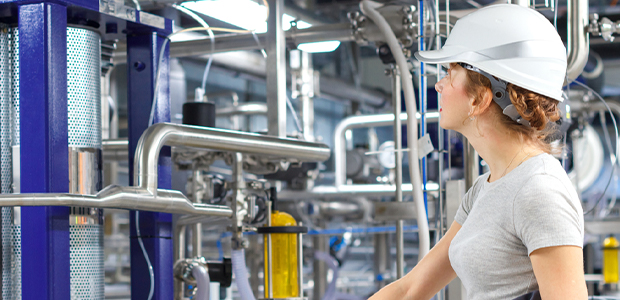
How Compliance Tech Is Making Field Service Workers Safer
Technology could be the answer to safety in the workplace.
- By Travis Parigi
- Mar 24, 2021
Predictive and proactive equipment maintenance is a priority for many field service providers today and with good reason. Equipment failure and machinery issues are one of the 10 most common sources of OSHA violations.
Organizations are realizing that fines represent only a fraction of the potential losses posed by unsafe equipment or working conditions. These liabilities can lead to significant financial costs associated with the personal injury or death of a worker and can weaken employee morale.
The knowledge that neglected machines and equipment increase risk doesn't make it any easier to organize and follow a predictive and preventive maintenance program. A large organization, however, may use hundreds or thousands of machines and pieces of equipment, each requiring regular upkeep, replacement of wear components, performance testing, repair and eventual replacement.
Attempting to schedule, perform, verify and track those tasks manually can be a massive administrative undertaking and prone to human error. Over time, traditional approaches often bog down operations, maintenance is delayed or forgotten and costly or even tragic failures occur. Large organizations need tools to better enforce safety initiatives so that workers can perform their jobs safely and efficiently without losing productivity to avoidable delays, such as delivery of replacement parts.
Enterprise asset management (EAM) technology is answering that call with solutions to reinforce compliance, from technician certification to equipment maintenance. By approaching safety on multiple fronts, compliance platforms can offer greater visibility into job safety throughout the organization. They help managers and dispatchers ensure workers are qualified to operate the equipment required for their assigned tasks. By using interdependent scheduling applications, they assist administrators and technicians to stay on top of the many moving parts that form an effective predictive and preventive equipment maintenance program.
Here are three essential areas that every EAM platform should address to maximize workplace safety:
1. Digitization and management of job safety analysis
Job safety analysis is a key component to job-site safety because it breaks each job down into sequences and teaches technicians to avoid safety risks. Compliance software elevates and transforms job safety analysis by converting equipment records and ongoing reporting into a digital, actionable format, giving managers greater visibility into the conditions affecting worksite safety. With digital tracking, a service technician can quickly call up the age and service history of a piece of equipment, dates of previous inspections, manufacturer's specifications and other important information. A platform can quickly reveal which pieces of equipment are failing and why, for example, identifying which piece of equipment is the most or least reliable.
Analysis can enhance preventive maintenance planning. It can reveal trends in equipment wear and repair histories, for example, to better predict machine life cycles and schedule maintenance or replacement before breakdowns are likely to occur. Predictive analysis can also inform budgeting and procurement decisions so technicians will have repair parts on hand when needed and be able to locate those parts through digital inventory tracking.
2. Certification compliance in job assignments
In the rush of responding to a customer’s service requests or assigning a job to a roster of workers, it is all too easy to assign an employee to perform a task or operate equipment for which they are not certified. Compliance software can track every individual's training history and certifications. When tied into work assignments or a dispatching system, a certification tool will only identify available employees qualified for the job, ensuring regulatory compliance.
3. Equipment maintenance
Process automation brings consistency and systematic scheduling to equipment maintenance programs. The platform should enable the organization to predict its needs and schedule timely actions to maintain safe conditions. An effective system will generate work orders according to scheduled tests or other calendar dates by meter readings, such as a machine's cumulative hours in operation and when triggered by events that would require a repair or status check.
A single piece of equipment may connect with multiple preventative maintenance schedules, each generating work orders automatically. In addition to scheduling maintenance, the platform can track inventories of supplies and parts required to perform anticipated service or repairs, prompting management to order any needed items in advance to minimize downtime.
With a digital EAM solution coordinating equipment maintenance and a credential monitoring tool to ensure that job assignments only go to qualified employees, field service providers give themselves the intelligence and processes they need to maintain equipment systematically and predictively. Over time, the investment in a platform will generate returns in the form of increased equipment reliability, minimal downtime, maximum equipment utilization, lowered overall maintenance costs and extended equipment life. Most importantly, the organization will be providing safer worksite conditions for its employees.